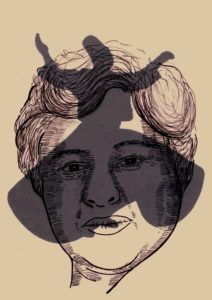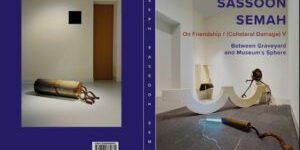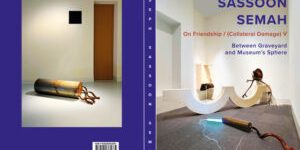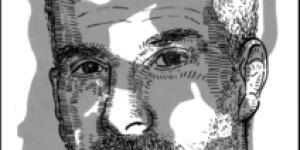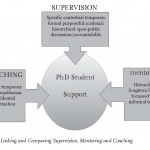Current Sufism In Israel. The Way Of Abraham – A Bridge Between Religions
No Comments yetCurrent Sufism in Israel El Tarika El Ibrahimiyyah – The Way of Abraham – A Bridge between Middle East Religions
Introduction
I wish to thank the University of Goettingen for inviting me to lecture at the Intercultural Theology program on the Current Sufism in Israel and on Sephardic Ultra-Orthodoxy in Israel.
I will begin by introducing my subject with some historical background. Then, I would like to make a reference to the specific audience sitting here right now because it is a very special audience. On the one hand, it is German; on the other, it is an international audience. So we have to consider how do we speak to such a local yet global group.
At that point, I will present the thesis of this lecture.
So, let us now discuss the issue of the Sephardic Jews. Who are they?
The reason why one knows so little about the Sephardic or Oriental Jews is also a matter of scientific concern for those of us who study Intercultural Theology. Thus, let us have a quick look at a long and serious matter such as The Stage of History.
Yes, stage as in Stage Theater, with the very writers who write the script and the very actors who play the protagonists and the very hegemonic audience who wish to see themselves on stage, or else the very far exotic other. Then we shall move forward to have an idea about the intellectual assets of the ISRAEL Sufi way and perhaps if time allows, we shall read during our workshop some of the devotional texts studied by the Israel Sufi Way, such as El-Ghazali. So hopefully you should have some taste regarding the intercultural Theology that is bridging between religions in the Middle East today, and we shall conclude with that today.
Background
In the Jewish State of Israel, Sufi activity had been almost eliminated by the disruption of the War in 1948, partly revived after the renewal of contacts between Palestinians in Israel and in the West Bank and Gaza “in the wake of 1967 Arab Israeli War” and suppressed in the Second Intifada, also known as the Oslo War and the Al- Aqsa Intifada (2000 to 2005). This Intifada raged between the 20th and the 21st century.
In this lecture I focus on Sufism in Israel as manifested by The Israeli Sufi Way. The Israeli Sufi Way is known as The Sufi Way of Abraham. In Hebrew – One of Israel’s two national languages, it sounds Derekh Avraham (אברהם דרך). In Arabic, the other national language, it sounds Al-Tariqah Ibrahimiyyah or Ibrahimiyyah-Al (א-טַּרִיקַה אל-אִבְּרַאהִימִיַּה) / الإبراهميّة الطّريقة ).
The members of the Israeli Sufi Way come from various circles: Academy, conservative and orthodox Rabbinic institutes and leadership of other Sufi brotherhoods of Israel: Qadiriyyah, Shadhiliyyah-Yashrutiyyah and Naqshbandiyyah.
Ibrahimiyyah defines itself (2014) publicly as an inter-religious movement encouraging dialogue between Jews, Christians and Muslims. This inter-religious character is a “post-Sufi” strategy as well as a spiritual response to the particular modern European challenges of the State of Israel, tackling the Israeli East-West debate.
The Sufi leadership of the 3 Muslim brotherhoods responded to the challenge of the peculiar circumstances in which they live in the Middle East, by joining the Ibrahimiyyah and establishing it as the Israeli Sufi Way of Abraham.
This Israeli Sufi brotherhood was created during the 1990s right at the end of the twentieth century. Public activity gathered momentum during the first decade of the twenty first century, with a double mission of both peace between Jews and Muslims, and spiritual search for Medieval Jewish Sufi roots. Special attention is given to 16th century Safed (in the Land of Israel) and of Egypt and North Africa and since the Sufi festival in 2010 also to Indian Jewish Sufism of perhaps 12 century.
Here and Now
We have in the audience 60 students of Prof. Andreas Grunschloss of the Faculty of the History of Religion and on the other hand 30 international students of Prof. Fritz Heinrich Intercultural Theology program of the Theological Faculty of Goettingen University.
Therefore, my lecture relates to both the historical and theological dimensions of this phenomenon, which I consider to be a capsule of Jewish Muslim spiritual brotherhood. It is true that The Way of Abraham was established only in the 1990s. And yet we should ask whether it is indeed a new religious movement. New or old, this is the question.
While this particular initiative has a local – and a national – Israeli context, as a Jewish-Muslim initiative it is also part of a larger scope. The Israeli Sufi Way interfaces with an inter-religious trans-local context that emerged during the 20th Century. It should also be looked at in the international context of an International and Intercultural Sufism that emerged in the USA and Europe. Ibrahimiyyah is a new religious movement in that sense that it is committed generally to the mystical spirituality of Sufism, while departing it from any established religion.
Looking at the Israeli Sufi Way in the Israeli context, it is a “glocal” phenomenon. In other words, Ibrahimiyyah is a global yet local movement. It is a manifestation of two opposite powers: on the one hand, the social and political Israeli realms of Dialogue and Peace movements and on the other, it belong with the fundamental realms of religious Revival and Jewish Renewal.
We have to remember that there this order or brotherhood is not an official institution. It is not registered as a non-profit or a religion. Therefore is features a built-in flexibility and reflects changes in the view of its members as it lives on.
Hence, what began as Derekh Avraham, the Sufi Way of Abraham, first in Hebrew and then in Arabic, is more and more referred to by its members as “the Israeli Sufi Way.” This gradual change reflects a not-always-conscious tendency to focus mainly inwards, to the Jews themselves. So the Israeli Sufi ways, which was for many years Jewish Muslim movement, is often turning more toward Jews in Israel, the Jewish State and beyond, to the Jewish world.
The Ibrahimiyyah is still working tightly with Muslim teachers and friends, but it also gradually developing a typically Jewish Sufism. It is calling Israelis to look at the very Jewish Medieval origins of Sufism and to take a moderate perspective [toward their faith]. It invites Jews to refrain from looking at things in a clear cut, black and white, perspective. This is no little challenge for a culture famous for its inclination to heated arguments and even bickering.
So Ibrahimmiyyah appears to go against Jewish tradition and the fundamental nature of Orthodox Judaism. But this is not really the case. It does stand on a firm ground of medieval (and even Biblical) Jewish tradition.
Indeed, unity of opposites is no stranger to both Hebrew and Muslim classical Sufi mystical traditions. (Ibn Arabi’s wahdat al-wujud, unity of the being, وحدة الوجود).
They experience silence in the midst of noise, Love in the midst of hate, hope in the midst of despair.
My thesis
Considering, theologically, the 4 major criteria of Moshe Sharon for new religious movements
– Holly new book
– Holly New Schedule\Days
– Holly new Spiritual figure
– New Religious Praxis
I would argue that the Israel Sufi Way is an NRM if one considers Judaism since Safed 16th century as an NRM, which I doubt would one do.
But that is a matter of study for another occasion.
From an intellectual-historical perspective, one should consider mainly developments within the Mizrahi and Sephardic Jewish traditions.
Mizrahi/Oriental signifies Jews dwelling in area occupied by the Muslims in the 7th century while Sephardic refers to Jews who were forced to leave the Iberian peninsula following Expulsion of the Jews from Spain in 1492.
(Sephardic means originating from Sepharad, Spain or the Iberian Peninsula.) These terms are largely (but not entirely) overlapping, namely referring to the same communities.
Here I refer mainly to developments, which occurred in 16th Century Safed as well as North Africa, India and Egypt since 12th century on.
I argue that the Intercultural Theology of the Israel Sufi Way (i.e. the contents of the gatherings as reflected in the selection of Sufi and Kabbalistic texts mainly from 12th and 16th centuries, translated and studied by Ibrahimiyyah) — clearly demonstrates The Israel Sufi way isnot as a mere political peace movement. Rather, it is a thorough-going spiritual-intellectual movement of Jews who seek to remember and re-connect with their own forgotten heritage. This is a group of people who seek to discover their own genuine Jewish Sufi origins and sources.
I will argue that this forgetfulness was imposed on the Sephardic Jewish culture by forces of the Israeli-Arab conflict, European modernity, Westernization, and by Ashkenazi secular categories.
My thesis is that the Way of Abraham has combined the local El Qadiri [i] and Shadhili Yashruti [ii] tradition and the Naqshbandiyya [iii] tradition with a renewal Jewish import from Medieval Jewish Sufism not as a new religious movement but as a way for Mizrahim, for Sephardim, to live in the Middle East in a good spirit and in neighboring relations with the religions of the Middle East Islam, Christianity, Judaism and the new spiritualities that are currently coming from the Indian peninsula.
Who are the Sephardic Jews?
They are the Jews who find themselves in Medieval Spain creating a great Jewish culture and religious Jewish texts in Hebrew. According to Daniel Elazar, the Sephardi were the Majority of Jews, about 95%, at the 11th century yet in the recent centuries they are not the majority of Jews as most Jews in Europe and in the USA and Canada are not Sephardi but Ashkenazi.
In Israel until the 1990s, the majority were Sephardic Jews. These Jewish Israelis identified themselves as Mizrahim (Orientals) mainly since 1983. Yet, recent studies by Ben Dor and Behar traced the use of the term Mizrahim as identity marker (at least of some Sephardi intellectuals), already from 1910.
Thus, again, we are talking about the same people as we say both, Sephardim or Mizrahim.
The Stage of History
Historically, there is no one Sephardi History, as there are many Sephardi Histories; each Sephardic Jewish community has its own History. Not because the Sephardic Jews did not have an intellectual discourse of reading and writing. They definitely did read a lot and wrote quite much, more than any other Jewish group.
Yet, the unfolding of history was such that the history of the Sephardic Jews was not yet staged on the Stage of History. While they wrote, quite a lot, scholarship on the history of Sephardi Jews during the last 70 years leaves much to be desired. One needs to set a new stage with new historical tools, combining philological research with the research of Folklore studies.
Who sets the Script Unfolded on the Stage of History?
I want you to close your eyes. Imagine there is a stage of History where the protagonists you know are active and vivid such are the Jews, the Christians, The Muslims, the Catholics, the Protestants, the Hindus, the Buddha, the Maya.
But when you look for the Sephardic Jews, they are not to be found on the Stage of Jewish history. They are largely ignored by mainstream historiography.
They are periods associated with the Sephardic Jews such as the Golden Age in Spain, the Expulsion from Spain 1492, Safed 16th Century, The Damascus Blood Liber of 1840, the Sephardic immigration from the Islamic countries into the new State of Israel in 1948.
All these dramatic periods relate to each other in revival and in survival. They serve as important turning points in Jewish history. Yet, they are largely hidden from the eye.
In Safed in the 16th century, I would argue, the Modern Jewish way was designed and shaped the way we know it today. Yet, the secrets of Kabbalah of Safed made the History of Safed remain hidden and unseen for hundreds of years. (Kabbalah, Jewish esoteric learning, is not easily accessible).
But the story of the past did not disappear altogether. 16th century Safed (a Jewish center now in Northern Israel and then within the Ottoman Empire) is my field of expertise. Safed was the showground of an intensive creative intellectual history for the Jews. Yet this history was largely hidden from the mainstream historians. Whywas this history so difficult to trace and understand?
Was that a mystery? No. It is a subject for an analysis. I assume we all see through dichotomies. Black and White, Blue and Red, Right and Left. Isn’t it?
I would argue that this may be explained by the inherent limitation of the dominant way of thinking, which applies dichotomies. This Yes/No thinking as Secular versus Religious, Mysticism versus Religious Law, and even Allah versus Eloha, The God of Israel. That is why the Sephardic Jewish way of life was—to a large extent—misunderstood and perhaps even misrepresented.
Yet, once we are able to overcome this kind of black and white way of thinking, we kind find the way to understand and understand this Sephardic tradition. This is a tradition that builds bridges between Middle Eastern Religions today, because when Allah and God are one, the bridge is set for the religions to mutual respect.
My first argument today is that the Way of Abraham is powerful case study for this perspective.
The Sephardic Ultra-orthodox Jews in Israel are typically affiliated with the Shas Movement. Shas (Hebrew: ש״ס, an acronym for ספרד שומרי Shomrei Sfarad, lit., (“Religious) Guardians of the Sephardim”) is an ultra- Orthodox movement and also a religious political party in Israel. The Shah movement was founded in 1984 under the leadership of the illustrious (Iraqi) Rabbi Ovadia Yosef.
Sephardic Jews of the Shas Movement adhere—in terms of religious practice—to the interpretation of Jewish Law (Halacha) by Rabbi Yosef Karo. Indeed, Rabbi Yosef Karo authored his famous Halachic compendium of laws, Shulkhan Arukh (litteraly meaning “A Set Table”), in 16th century Safed.
In other words, Sephardi Jews have a set of laws that is different from the Ashkenazi (European) one.
Most important particularly when it comes to the Ultra-Orthodox camp, is the deep divide between the secular and the religious that we find among the Ashkenazi.
To say the least, the Sephardic Jews, even those who hold to modern norms, were not subject to the modern dichotomy between secular and religious. It is within the Ottoman Empire that 90% of the Sephardic Jews lived for generations. So while many would refer to Sephardic Jews as Arab Jews the truth of the matter would be that they are Jews under the Ottomans rule.
That is Turkish Jews in a way.
One has to remember that the separation of Church and State is originally European and Christian. It began with Jesus quoted as saying: “Render therefore unto Caesar, the things which are Caesar’s; and unto God’s, the things that are God’s” (Matthew 22:21)
It then evolved into an ever growing dichotomy beginning with the Renaissance and later during the enlightenment. European modernity required a dramatic separation from many aspects of religion. Church and state were to be fully separated.
Not so in the Ottoman environment, where modernity continued alongside religion.
With the encounter of West and East, the secular outlook became also the colonialist outlook. European secularism became a tool for breaking and deconstructing the unified
politico-religious heritage of the Sephardic communities.
Within modern Israeli culture one often finds an Orientalist outlook of the Sephardim, as explained by Meir Buzaglo. On the other hand, Sephardic Jews in Israel also became as source and a force of an underground creativity in the Arts, culture and intellect, as explained by Ammiel Alcalay and Haviva Pedaya.
Intellectual Account
The concept of the Israeli Sufi Way emerged – or reemerges – in the face of Israeli-Arab conflict. While the challenge of peace is structured in this effort, it differs from other Israeli peace movements such as the well-known (mainly Ashkenazi) Peace Now movement. The Peace Now movement (עכשיו שלום Shalom Achshav) was launched in 1978 as an all-Israeli movement aimed at supporting the Egyptian-Israeli peace process, but later became more and more sectorial, representing mainly leftists of European origin.
To illustrate the difference let us look tomorrow into the lyrics of the devotional text studied by the Ibrahimiyyah.
We will study that at our workshop tomorrow.
Let us focus on the 5th Source of the 3rd chapter in the poem of Al Ghazali which is a devotional text for the Way of Abraham.
El-Ghazali, a devotional text studied by the Ibrahimiyyah:
In the name of Illah, the merciful, the compassionate
The prayer and the peace
Upon Our Master Muhammad
And upon His beloved and pure family and friends
Oh Lord!
Have mercy on us
For Thou art the merciful Father
Forgive us
The evil of our passions
And our wrongdoing
Oh Lord!
Thou art peace
And from Thee doth peace emanate
And to Thee shall peace return
Bless us, oh Lord, with peace
Oh Lord!
Guide Thy creations to their success
So that their deed shall be blessed
And cause them to love each other
May the Lord bestow plenty of bounty
On all of men’s doings
Oh Lord!
Avert wars and misfortunes
From Thy created beings
And take them closer to Thee
Oh Lord!
Oh Lord of the Worlds!
Amen and amen.
This text demonstrates the complexity of Ibrahimiyyah as a Jewish-Muslim gathering in the midst of the Jewish-Arab conflict, since the year 2000 up to now.
In a search for God, Ibrahimiyyah members call for peace which involves love, mercy and regret. But suchlike classical Kabbalistic and Sufi texts abound among the readings and theosophical study and practice of Ibrahimiyyah: Al-Rumi, Al Ghazali, Al Qushayri, Attar, and Muhyi al-Din ibn ‘Arabi – all are common names inthe Tariqa.
But this is not all.
The transformation of Ibrahimiyyah from a focus on classical Sufi and Medieval Jewish texts into Sufism of the 21 Century is accompanied by the new media, using emails, blogs and Facebook.
Since 2000, members of the Way of Abraham are at the forefront of forming a new intellectual and Academic public Hebrew sphere, which is Islam-friendly. This is done by translating books, poetries and works, by writing PhD dissertations with no institutional budgets, and by participating in panels and conferences. Ibrahimiyyah members used for years to meet weekly in Tel Aviv within each academic year since 2000. There are also three annual conferences being held in Jerusalem, Nazareth and Neve Shalom.
And when the Shadhili Yashruti Shaykh opened the doors of the Sufi lodge (Zawiyah) in Acre [Akko], the Ibrahimiyyah has gathered in Hanukkah too, for a celebration. This annual Hanukkah celebration is centered on light in Jewish and Muslim traditions. And includes Hanukkah sermons by Muslim Shaikhs, perhaps a first in history of religions.
One has to remember that while Hanukkah is a festival of lights, it is also a nationalistic Jewish holiday that commemorates the great Maccabean or Hasmonean Revolt (Hebrew: 167 ) (החשמונאים מרד to 160 BC). Its religious significance revolves around the purification of the Jewish Temple in Jerusalem.
Not a light thing, to have Palestinian Muslims regularly contribute to such an event.
Occasionally, Ibrahimiyyah hosts visiting Sufi Shaykhs from the USA, Albania or Turkey. Considering the fact that Ibrahimiyyah has no lodge (zawiya) of its own, it has been expanding for about twenty years, around 30 to 70 active adherents were assembled, most of them belonging to the Academia and to artistic and intellectual circles in Tel Aviv, Jerusalem and Galilee. All of the participants are organized into a formal study group in which they discuss their spiritual experiences over Sufi texts.
Ibrahimiyyah became an active Sufi order in Israel. With weekly meetings held in Neve Tzedek Tel Aviv tens of members gathered at the ally in the house of Rabbi Roberto Arbib and his wife Dr. Marina Arbiv. Some of the seminars were held at the Masorti synagogue Sinai at Gordon Street and soon weekend conferences followed.
From its very beginning, since its establishment in the presence of Shaykhs, Rabbis, Poets, Academics and a large audience who gathered at the Jewish-Arabic village of Neve Shalom in 2000, the Ibrahimiyyah adapted the dhikr ceremony as a common prayer, as a remembering practice of enlightening the heart, and as a spiritual call.
The Manasra family and disciples lead the dhikr ceremony in the gatherings. Thus the Ibrahimiyyah dhikr ceremony includes foundations from the Qadiri dhikr as well as a devotional song in Hebrew composed by Rabbi Nathan, that follows the melody of the prayed La Ilaha Illa Allah and performed by Rabbi Roberto Arbib in the end of each Ibrahimiyyah dhikr:
There is none like our God
There is none like our Lord
There is none like our King
There is none like our Savior [La Illah Ila Allah]
Who is like our God
Who is like our Lord
Who is like our King
Who is like our Savior
Let us praise our God
Let us praise our Lord
Let us praise our King
Let us praise our Savior
Blessed be our God
Blessed be our Lord
Blessed be our King
Blessed be our Savior
Lo, Thou art our God
Lo, Thou art our Lord
Lo, Thou art our King
Lo, Thou art our Savior
The specific contribution of the leadership of the Ibrahimiyyah for fourteen years was a weekly gathering of study of Sufi scriptures, in Hebrew, under the guidance of Muslim Sufi Shaykh and of Dr. Avi Elqayam, as well as a practice of a dhikr. Ibrahimiyyah performs musical improvisations, devotional poetry, whirling dance and prayers.
This involved translations of Sufi classical corpus from Arabic into Hebrew. Indeed Elqayam and the Ghassan, the son of Shaykh Manasra, translated major classical Sufi works as well as a researched into the [forgotten]works of the Jewish Sufis. Following an intensive decade of Sufi praxis, Shaykh Manasra who had been nominated in 1995 as the Qadiri Shaykh of the Holy Land by the Sufi Shaykh of Al-Aqsa Muhammad Hashem Al Baghdadi, initiated in 2008-2009 five of the Israeli Jewish Sufi leaders – whom he attributed as carrying exceptional character and scholarly achievements – as Shaykhs of The Ibrahimiyyah. Along with his son Ghassan and his grandson Abed Al Salam, Manasra guides the dhikr ceremonies and teaches the Sufi texts and poetry.
Conclusion
I argued in this paper that the Ibrahimiyyah is holding a specific practice that corresponds with Islamic traditional.
So we have here an inter-faith peace oriented efforts with Muslim and Jewish activists working together, often with members of other faiths.
Yet, the Israeli Sufi Way of Abraham is turning largely inwards, to the Jews themselves. They present an alternative view of combining region and modernly that draws on the heritage of Sephardic Judaism. Both as a tradition that avoids the pitfall of dichotomy between modernity and religion and as a tradition that has much in common with Islam.
Sephardic Judaism traditionally kept its channels open to interaction and inspiration from both the European-Christian and the Levantine-Muslim worlds. Ashkenazi Jews followed the European model, which led to a great split between secular modern Jews and the Ultra-Orthodox. This tendency to think in dichotomies, the either/or paradigm, made reconciliation with Muslim Arabs more difficult. It also forced the Sephardi Jews to stay under the radar for a very long time, in the name of an imaginary “melting-pot”.
But the Israeli Sufi Way—and similar movements—present an alternative. Making Judaism more tuned to both Europe and the Levant. Thus, forming an alternative modernity to the fully secular West, and challenging the hegemonic Ashkenazi Judaism of Israel, in both its variations, the modern-secular and the Ultra-Orthodox.
And, at the same time, the Sufi Way opens the hearts of Israeli and other Jews to Muslims, Christians and Druze and others. The Ibrahimiyyah contributes to bringing peace to our region via a spiritually intensive grass-root effort.
Other important corollaries are also academic work, new discoveries and a lot of happiness in lightly-social and deeply-religious gatherings of all sorts.
Notes:
[i] From the Qadiri point of view their active support in establishing the Ibrahimiyyah might be seen as a strategy to survive.
Under the circumstances of living under a Jewish government since the 1948 War, the Sufi Qadri brotherhood declined, yet it was “partly revived after the renewal of contacts with the Palestinians of the West Bank and Gaza in the wake of the 1967 War”, and roads to these contacts were blocked again after the Second Intifada.
Dr. Avi Elqayam of Bar Ilan University, Prof. Paul Fenton of the University of Paris Sorbonne and the Masorti [Conservative] Rabbi Roberto Arbib of Tel Aviv, were looking for a Sufi Shaykh. They visited Shaykh Dir Kadis of the Palestinian Authority,and the Shaykh of Rammla Abu Labban of the Rifa’iyah, who took them to Gaza to meet the great Shaykh of Rifa’iyah. The last paid then a visit when he came to teach a seminar in the first gathering at Neve Shalom. Yet, Shaykh Abd Al Salam Manasra and his family were committed enough to teach the Ibrahimiyyah on a weekly basis for 14 years already. Thus Shaykh Manasra is one of the founders of Ibrahimiyyah. As with spiritual-historical events, one has to cross few versions about how it all started. According to Shaykh Manasra, at the late 90’s one of his disciples, Imam Khalid Abu-Ras met with Dr. Avi Elqayam at an international conference. Abu-Ras was talking about him, and following this, the Jewish leaders of Ibrahimiyyah. Dr. Elqayam, and Rabbi Roberto Arbib and Dr. Itzchak Weismann came to see the Shaykh in Nazareth. He recalls these days:
When Abu Ras spoke about me, Elqayam did not leave him until he gave him the contact details, and I heard he asked would the Shaykh be angry if I will call him? [They came to me and] We spoke about Sufism and love of people. They asked me “Do we have to be Muslims? And I answered “If we would have forced you [Jews] to become Muslim than we would have not been [deserved to be called] Sufis. You can become Sufis without being Muslims, [because] what is Sufism? It is love, it is help. It is giving without receiving.
Long time ago, once, in the beginning of Derech Avraham [Ibrahimiyyah] Elqayam asked me whether or not “we have to be Muslims”. I answered him “not at all”. There are fifteen million Jews and One and half milliard Muslims, so why should we take the Jews. Let the Jews stay Jews. We need peace to be amongst us. To think not make a problem to the other. For us in Islam Peace is God, This is one of the names of God. If we think of peace then we think of love of God. Avi Elqayam said to me once, four-five years ago, during an argument “We in the Way of Abraham”. [But] I made the Way of Abraham. With us to make a Way is a Sufi matter. Who is not a Sufi can’t make a Way. Making a way is a matter of bringing hearts near each other and to walk together in one way. I did not wish Jews to become Muslims and Muslims to become Jews. So we made The Way of Abraham, because there is no leader in the Israeli Qadiri Sufism but me. Even though professors …because they need first to receive [the hirka] from a Shaykh. And Shaykh Muhammad Hashem Al Baghdadi passed on to me the Hirka.
I meant the Way of Abraham to be that the Jews will stay Jews and Muslims to stay Muslims and Christians to stay Christians.
We aimed for love to prevail, for peace and for humanitarianism.”
[ii] The Yashrutiyya founded in Acre by the Tunisian Shadhili-Madani Shaykh ‘Ali Nur al-Din Yashruti (1815-1899) in the mid-nineteenth century. The Shadhili Yashruti Shaykh lives in Amman yet the Shadhili Yashruti in Acre host in their beautiful zawiya cultural and social panels on the Architecture of Light and on Inner Mystical Journey in Kabbalah and in Sufi Mysticism. With Shadhili Yashruti support the Ibrahimiyyah turned their Jewish holiday of Hanukkah into an inter-religious festival of light (النور معماریة) ,as its secret Sufi teachings.
[iii] The head of the Naqshbandi Sufi order in Jerusalem, Shaykh Abd al-Aziz Bukhari, a Muslim leader of the Ibrahimiyyah. Shaykh Abdel Aziz Buchari adhered to the orthodox position held by Naqshbandis and Salafis alike, that Islam is the final religion; on the other hand, however, he was active in the inter-religious understanding movement and participated in many interfaith conferences, even to an extent that it cost him lose his job from which he earned his living. Shaykh Abdel Aziz Bukhari was pointing out that the three Abrahamic religions stem from one common source, and in a lecture at Bar Ilan University at a course on Sufism he maintained that all denominations are different traditions of the one universal religion. In harmony with this position he claimed that he has been long engaged in interfaith dialogue, taking part in various conferences in the Holy Land especially Tarika Ibrahimiyyah and the Sulha and Jerusalem Hug as well as conferences around the world, and hosting delegations in his Naqshbandiyya compound in Jerusalem. To the end of the first decade of the 21 century the neighborhood took over the Naqshbandiyya awiya in Jerusalem and turned it into a mosque. The Naqshbandiyya at the Holy Land was not as active as in Turkey and Syria, yet Shaykh Abdel Aziz Buchari has been long characterized by his modern and universal da’wa of Love and Peace that appealed to Sufis from the West, who made pilgrims to Shaykh Abdel Aziz Buchari
home at the Old City of Jerusalem. His lectures combined a strong orthodoxy with an interfaith and interreligious understanding. He was willing to teach Quran and Islam to Israelis and to Jewish members of Tarikka Ibrahimiyyah with respect to their search for their own Jewish Sufi origins. Shaykh Abdel Aziz home in East Jerusalem became a center for international delegations from many Western countries around. He was an Ambassador for Peace and traveled extensively to meetings and conferences around the globe, from Tunis and Morocco to Turkey and England and the United States. Shaykh Abdel Aziz Bukhari was attacked in his own Sufi compound in Jerusalem by his sister. He died in June 1st 2010.
You May Also Like
Comments
Leave a Reply
